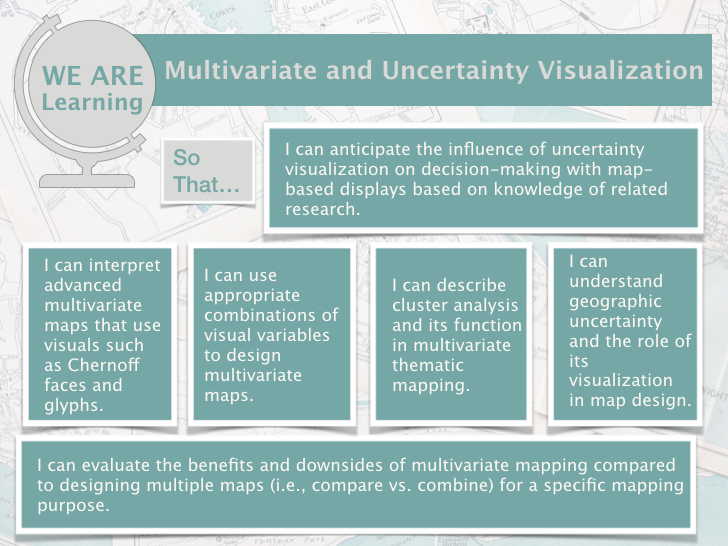Overview
So far, we have talked about mapping only one variable on the map. These type of maps are known as univariate maps. For example, we have seen maps of unemployment rates, zoning maps, and populations maps. But what if you want to map more than one variable and have these variables share the same color scheme? In lesson 5, we will talk about maps in which you map two or variables, which are called multivariate maps. We will also talk about geographic uncertainty. When you make and display a map, many viewers might take that as the ground truth. However, the data we use for a map is not a perfect representation of a population due to various reasons which can range from data collection issues to using faulty data sources. Through mapping geographic uncertainty in which we indicate the level of uncertainty for the areas we map, we are transparent about what we depict which can create trust to the target audiences of the map.


